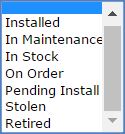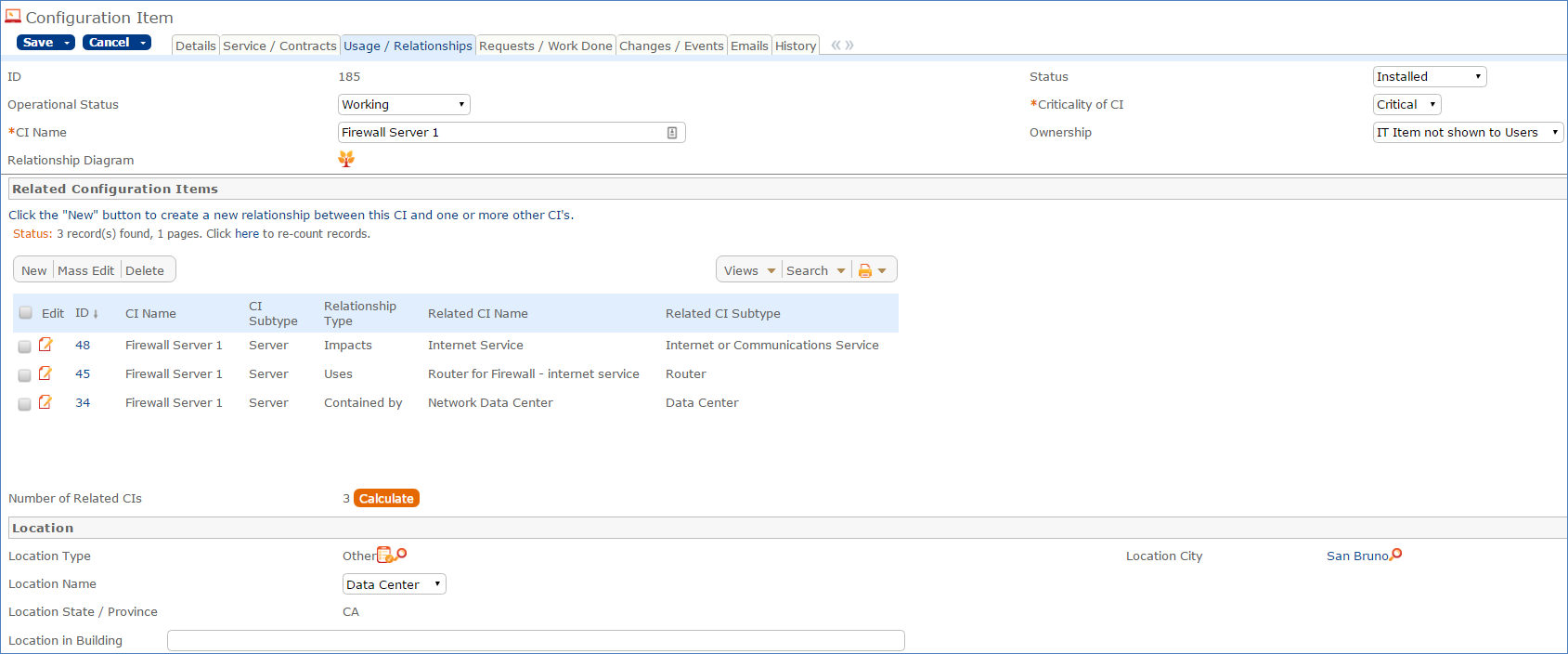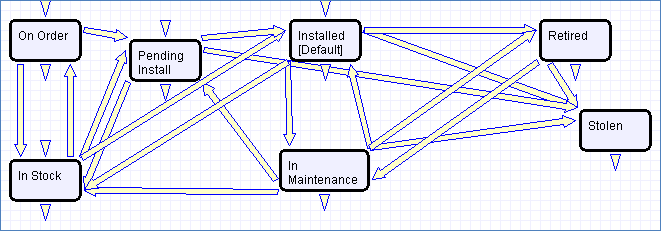Configuration Items Table
The Configuration Items table holds records containing information about your company's Configuration Items (assets). It may include CI's that are in inventory and not in service, as well as all assets that are in service.
Use Case
Configuration Item Creation
Staff may add a Configuration Item manually to the system by creating a new record, or integrated Discovery systems may create CI records automatically with specified attributes.
Configuration Items have type-specific attribute fields (Manufacturer, Model, Serial Number, etc.) and relationships to other CIs, Service Requests, Problems, and Change Requests.
Related Service Requests, Problems, and Change Requests are displayed as lists of records within a CI, so the history of a given CI is readily available.
Configuration Items may also be related to other CI's in an upstream and downstream embedded table.
Record Creation
Configuration Items may be created independently or when selecting Configuration Items in Change Request and Contract records. Configuration Item Name and Configuration Item Type are required fields.
Configuration Item Fields
Details Tab
The Details tab contains general information about the CI's status, SLA, responsible team, definitive media library, knowledge articles, and other details.
The options for Status are:
CI Type can be set to any of the following options:
For each CI Type that is selected with the exception of None, there is a list of relevant CI Subtypes to choose. For example, the CI Subtypes for the CI Type of Software are:
Additional information that can be entered for a CI includes the CI Tag, Serial Number, CI Role and Description, Manufacturer, Vendor, Item Name/Number, and Item Description. Data sheets or files containing prices can be attached to the Data Sheets and Pricing Info field, and any other files can be stored in the Attached Files field.
Usage / Relationships Tab
The set of fields in this tab can be used to establish relationships between multiple CIs, and to specify the location of the CI.
In this example, the firewall server has three types of relationships with other CIs: one in which this firewall server impacts another internet service CI, one to indicate that this firewall server uses a router, and one showing that this firewall server is contained within a network data center.
Changes / Events Tab
This tab contains information about any change freezes, the CI change log, baselines, and related events.
To add a new baseline, click New in the Baselines table. This will open a new baseline record that is automatically linked to the CI:
History Tab
This tab has information about when the CI was created and updated, who created and last updated it, and all changes made to fields. It also contains the CI Version, which can be set to auto-increment if certain fields in the CI record change.
Configuration Item Processing
Knowledge Articles
Knowledge articles related to a configuration item can be searched for and selected in the Relevant Knowledge Articles table by clicking on the lookup icon.
Ownership
Configuration Item ownership is defined as the user whose Login matches the User Login field in the Configuration Item record.
Processing of Records
Configuration Items follow a lifecycle workflow from ordering through retirement.
Configuration Items are created in the state of Installed by default (see Workflow diagram below). Configuration Items that are requested but not immediately available might be created in a state of On Order, moved to In Stock when the Configuration Item is received, Pending Install while Operations is tasked with installing the Configuration Item, and finally Installed. Installed Configuration Items can change to In Maintenance for repairs and Retired or Stolen when the Configuration Item is no longer in use.
Workflow
Integration with CMS and CMDBs
All Service Requests, Change Requests, Incidents, and Problems are fully integrated with the Configuration Management Database (CMDB). Every Configuration Item displays a related table for each request type, showing all of the Requests that the Configuration Item was included in. With the appropriate permissions, a user can easily open the Configuration Item from any of the Requests related to it, and view other related Requests to help identify, investigate, diagnose, and eliminate problems/issues more easily.
Each Configuration Item is also linked to a parent Catalog Item, which serves as a container record for the Configuration Item, and displaying all of the other Configuration Items for the Catalog Item in the Configuration Management System (CMS).
Automation
TB: Delete Retired CI's a year after last update
Rule Trigger
This rule runs once a month on CIs with a Status of Retired that were last updated over a year ago.
Description
Delete all records that are Retired and last updated over a year ago.
Charts and Reports
The Configuration Items table has the following pre-built charts and reports:
- All Configuration Items by Status, sorted by count
- CI's purchased in the past 12 months with cost
- CIs with Change Logs in last 90 days
- CIs with change requests in last 90 days
- Configuration Items by CI Subtype
- Configuration Items by CI Type
- Maintenance Report -CI's With Problems or Maintenance Time
- Number of In Stock CIs by CI Type then subtype
- Number of Installed CIs by CI Type then subtype
- Service Due within next 3 Months
Example Report 1: Number of In Stock CIs by CI Type and then Subtype
This report outputs information about the number of CIs that are In Stock, grouping them by CI Type and Subtype. It has a chart component and a report component:
Example Report 2: CIs with Change Requests in last 90 days
This report provides a list of all CIs that were involved in change requests completed in the last 90 days.
Fields
The Configuration Item fields are described in the Configuration Item Fields Table in the Appendix.













